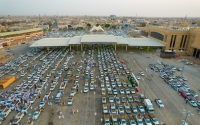
Traditional Markets in Qassim Province are commercial shops located in Qassim Province in the heart of the Kingdom of Saudi Arabia. These markets follow the Qaisariya style, which features open shops arranged around a central courtyard surrounded by an arcade for cultural activities traditionally associated with these markets. The Qaisariya style includes a main entrance and subsidiary entrances. The shops can be interconnected on three sides, with the fourth side serving as an independent entr...
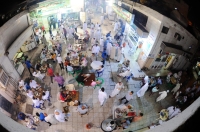
Traditional Markets in al-Madinah al-Munawwarah Province are old and historic markets for which al-Madinah al-Munawwarah Province is renowned . These markets feature open spaces with stalls selling traditional and heritage goods. History of traditional markets in al-Madinah al-Munawwarah Province Al-Madinah al-Munawwarah has known markets since ancient times, similar to other major cities in the Arabian Peninsula. Prophet Muhammad , peace be upon him (PBUH), was the first to choose a site for a...
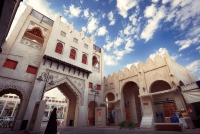
Traditional Markets in the Eastern Province are either open or partially/fully enclosed sites where various segments of society from different ages and nationalities come together. These markets trade in a wide range of goods, including traditional and handcrafted products, local foods, aromatic plants, and other activities. Many areas in the Eastern Province have roots in various historical periods, during which commercial activities flourished, leading to the development of different types of...
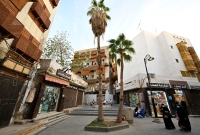
Traditional markets in Makkah al-Mukarramah Province , like other traditional markets in the Kingdom of Saudi Arabia, can be either open or partially/fully enclosed. In Makkah al-Mukarramah Province , and particularly in the western region, these markets typically follow the 'extended bazaar' style. This style features a long, covered passage flanked by shops on both sides, with occasional side alleys that are usually narrow and uncovered, overlooked by more shops. These alleys often...
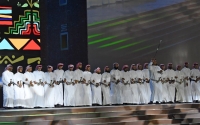
Most of the traditional dances in the Kingdom of Saudi Arabia have their origins in wartime occasions and have been treated as cultural heritage that does not accept much innovation. They are commonly known as folk dances, and mainly include: The Saudi Ardah : also known as Najdi Ardah , is an iconic traditional Saudi dance and is an official protocol used to welcome foreign heads of state visiting Saudi Arabia. It was included in 2015 as the first Saudi element on the Representative List ...
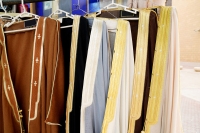
Mishlah or Bisht is one of the local names for the traditional Arabic cloak. It is a loose outer garment that is open at the front and holds cultural and social significance in the Gulf and Arab regions. Mishlah is considered a type of traditional attire in the Kingdom of Saudi Arabia , commonly worn by people during special occasions, ceremonies, and holidays. Mishlah is often embroidered with various types of silk threads, and zari in gold, yellow, silver, white, and red colors. Different typ...
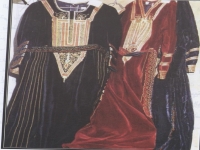
Traditional Garments in Aseer Province refer to the clothing associated with the customs and traditions of men and women in Aseer Province, south of the Kingdom of Saudi Arabia , as they are a rooted part of the popular cultural legacy of the province. In the past, several types of clothes were popular in Aseer according to environmental and climatic conditions, starting from the difference in the landscapes to the temperature which varied from one place to another. Clothes were made of either ...
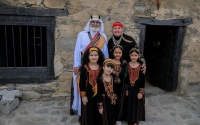
Traditional Garments of al-Bahah Province reflect the customs and traditional dress code of al-Bahah Province in the Kingdom of Saudi Arabia . The traditional costumes in the region varied, they included thobes and head coverings, among others. The designs of both men's and women's clothing were influenced by the economic conditions, the province's humble lifestyle, and the scarcity of fabrics in the past. Men's traditional garments of al-Bahah In the past, some men's c...
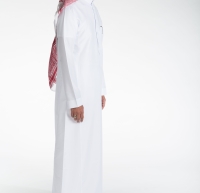
Thobe is not obligatory in the Kingdom of Saudi Arabia . However, many men wear this national costume in public facilities and places. It is one of the favorite types of clothing among Saudis. The majority of men in the Kingdom prefer to have their costumes tailored, while a few of them opt for ready-made clothes. Some government entities in the Kingdom require men to wear a Thobe , Shemagh , or Ghutra when entering their premises. In the Kingdom, leaving the house in one's undergarments i...
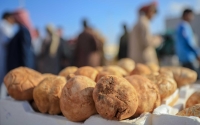
Desert Truffles, known as Terfeziaceae , are the fruiting body of a fungus that grows underground. They are often described as having a fleshy texture similar to potatoes. These truffles are abundant in provinces such as al-Jawf , Northern Borders , Eastern Province , and Qassim . They typically grow in plains and meadows and are sold at high prices. Desert truffles are considered a popular dish in the Gulf region in general, and particularly in the Kingdom of Saudi Arabia . Desert truffle frui...
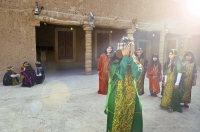
Al-Ghummayda , also known as al-Ghumma , is a popular traditional children's game in the Kingdom of Saudi Arabia. It has a simple concept and doesn't require a specific number of players or a set time for ending the game. The concept of al-Ghummayda game involves covering the eyes of one player with a piece of cloth to limit their vision. This player then begins searching for the other players who have hidden in various places, often making noises to confuse the seeker. If the seeker ...
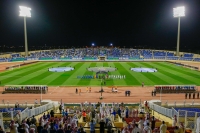
Prince Abdullah Bin Jalawi Sport City is located in al-Ahsa Governorate and is one of the multi-purpose sports facilities in the Kingdom of Saudi Arabia. It is one of the sport cities that host various matches and sporting events, and it is overseen by the Ministry of Sport . Establishment of Prince Abdullah Bin Jalawi Sport City Prince Abdullah Bin Jalawi Sport City was inaugurated in 1983 in al-Hufuf City, covering an area of 280,000 m 2 . It is bordered to the north by the Municipal Park (no...